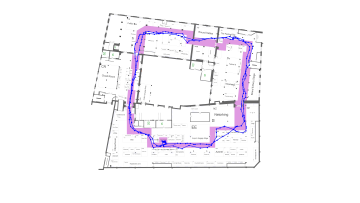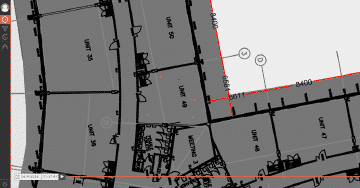Cooperative Positioning Engine Reaches General Availability

Cooperative Positioning Engine Reaches General Availability
Crowd Connected’s location platform ‘Colocator’ has always been capable of cooperative positioning. But with the recent 2.1 release of our SDK’s, it’s become an important part of our offering.
The concept of cooperative positioning is simple. Use a Bluetooth or WiFi signal between two mobile devices (phones), and use the signal strength to estimate the distance between them. Use this distance to help estimate the location of the two mobile devices more accurately.
A simple concept. But extraordinarily difficult to implement in practice. So why do we bother?
The answer is sharing. Every mobile device has different capabilities. Some devices we can accurately locate, and others may be more difficult. So we want to share information between mobile devices, using one to help locate another.
With version 2.1 of our mobile SDK, we’ve made the signals that are sent by one phone, and received by another, encrypted and secure. Which is a great step forward.
Previously, a phone would have broadcast signals that could, in certain circumstances have been used by a third party to track it. Given how seriously we take privacy, this limited the applicability of the technology.
Now that privacy and security is guaranteed, all of our customers can start benefiting from this unique technology we’ve developed.
Colocator was recently used at a major exhibition at London’s Excel. In these indoor environments, the differences between mobile devices can be critical.
Take WiFi signals for example. Apps running on Android phones can currently scan for nearby access points, and retrieve their signal strength. Colocator uses this to locate the phone. In ideal environments the accuracy can be down to just a few metres.
But iOS phones don’t allow apps to do this. Until now, most indoor positioning platforms have avoided using WiFi scanning for this reason. If it doesn’t work on iOS, then what’s the point?
Instead Colocator uses just these sorts of positioning techniques. And then shares the location accuracy that’s possible with other nearby mobile devices.
In this example, some Android phones might be accurately located through WiFi. They transmit an encrypted signal. An iOS phone nearby receives those signals. And the Colocator platform is able to locate the iOS device.
Cooperative positioning has been written about in academic papers for many years. It’s normally applied to sensor networks, where each sensor is stationary.
The big leap forward has been to apply cooperative techniques to moving objects, and to make it work at scale. Solving these problems, and the issues of security and privacy, have resulted in the world’s first mobile location platform capable of sharing location accuracy from one mobile device to another.
All of this remains largely invisible to our customers. Cooperative positioning can be switched on and off, and we’ll enable for any customers where it will be beneficial.
The only thing our customers will notice is that we’re able to locate more devices, more often, and more accurately than ever before.


